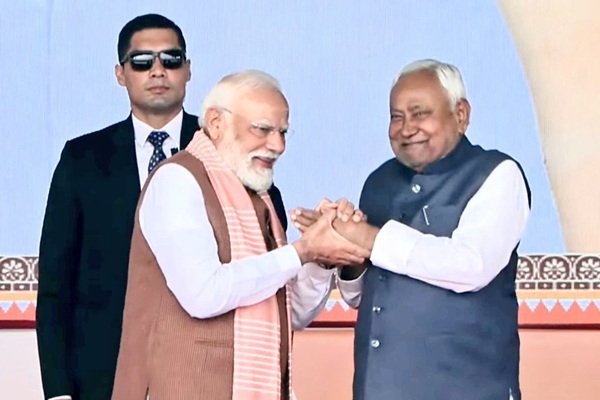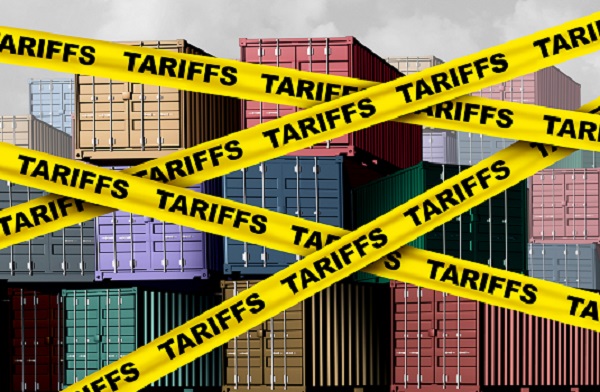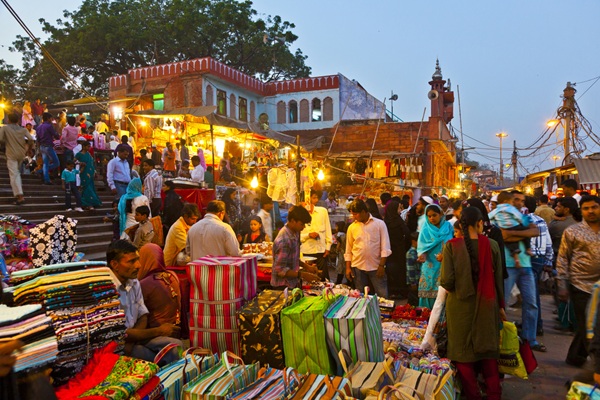.png)
Nitish Kumar's Tenth Ministry: Continuity, Caste Calculations, Gender and Regional Imbalances
The NDA’s new Bihar cabinet showcases stability at the top but uneven representation below — from caste arithmetic to gender gaps and regional imbalances.

Amitabh Tiwari, formerly a corporate and investment banker, now follows his passion for politics and elections, startups and education. He is Founding Partner at VoteVibe.
November 22, 2025 at 4:50 AM IST
Bihar Chief Minister Nitish Kumar has taken oath for the tenth time, inducting 26 ministers into his new cabinet. He is now second only to Jyoti Basu in the race for the longest-serving chief minister of a state that sends more than 25 MPs to Parliament. The NDA’s emphatic performance—built significantly on Nitish’s enduring popularity—highlights his continued relevance in Bihar’s complex political landscape.
The new cabinet, comprising 27 ministers with nine vacancies still open, represents a careful balancing of caste representation, coalition obligations and regional aspirations. Yet beneath this surface of continuity lie a series of contradictions that expose the challenges of representative governance in India’s third-most populous state.
The Architecture of Continuity
The BJP, with 14 ministers, commands the largest share, consistent with its seat strength. The JDU follows with nine ministers, while smaller allies—the Lok Janshakti Party (Ram Vilas) with two, and the Rashtriya Lok Morcha and Hindustani Awam Morcha with one each—receive symbolic representation to keep the coalition intact.
The Caste Calculus: Representation and Reality
Composition of Nitish Kumar’s Ministry
|
Social Group |
9th Ministry (Jan. 2024) |
10th Ministry (Nov. 2025) |
Elected MLAs |
Population |
|
HINDU UPPER CASTE |
31% |
30% |
36% |
11% |
|
YADAV |
3% |
7% |
6% |
14% |
|
NYOBC |
25% |
22% |
21% |
11% |
|
HINDU EBC |
19% |
19% |
19% |
25% |
|
SC-ST |
19% |
19% |
17% |
21% |
|
MUSLIM |
3% |
4% |
0% |
18% |
But this apparent alignment masks deeper distortion. Upper castes, who make up around 15% of the population, hold 30% of cabinet positions—less than their 36% share of NDA MLAs, but still double their demographic weight. This continues the long-standing trend of upper-caste political dominance despite declining population share.
The Yadav community presents another telling example. Their representation has risen from 3% in Nitish’s ninth cabinet to 7% in the tenth—corresponding to their 6% share among NDA MLAs—even though fewer Yadav candidates were fielded. This appears designed to accommodate heavyweights like Ram Kripal Yadav, who lost his Lok Sabha seat to Misa Bharti in 2024 but won the Danapur assembly seat this year. The message is clear: NDA wants to cultivate its own Yadav leadership to counter Lalu Prasad Yadav’s dominance.
The Muslim Marginalisation
This stems from the BJP’s unofficial policy of not fielding Muslim candidates: only four Muslims received NDA tickets. The resulting “representation gap” of 14 percentage points has effectively been used to accommodate upper-caste MLAs.
The Gender Mismatch
As the VoteVibe exit poll shows, NDA enjoyed a 10.6% lead among female voters—accounting for 65% of its total vote-share advantage. Yet women remain sharply under-represented in the ministry.
Incremental Adjustments, Limited Reform
Regional Disparities: The Geography of Power
- Ang Pradesh and Patliputra dominate (22% and 23% representation)
- Tirhut has four ministers
- Bhojpur, Seemanchal and Saran have three each
- Mithilanchal and Tirhut—traditionally strong political regions—are underrepresented
- 18 of Bihar’s 38 districts have no representation
- Bhagalpur–Banka zone (Ang Pradesh) has zero Cabinet representation
- East Champaran, a major district, has no minister
These gaps could fuel regional discontent and provide political ammunition to the opposition.
|
ZONE |
Elected MLAs |
Ministry Share |
|
SARAN |
10% |
7% |
|
TIRHUT |
22% |
15% |
|
MITHILANCHAL |
18% |
15% |
|
SEEMANCHAL |
7% |
7% |
|
ANG PRADESH |
15% |
22% |
|
PATLIPUTRA |
19% |
23% |
|
BHOJPUR |
9% |
11% |
The Road Ahead
Nitish Kumar’s tenth ministry reflects the maturity and constraints of Bihar’s coalition politics—deep experience in balancing competing interests, yet an inability to escape the structural inequities that continue to shape the state’s political order.



